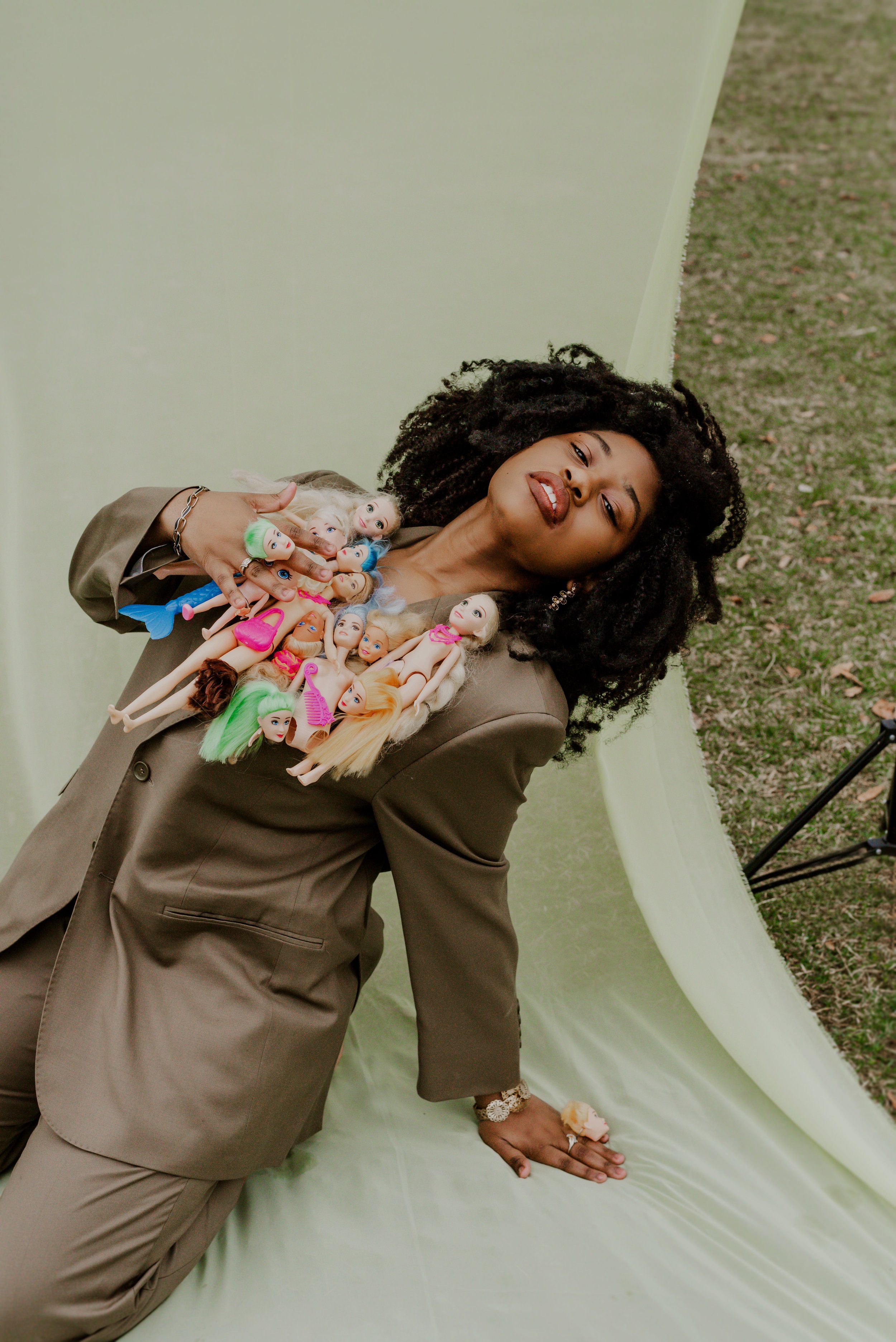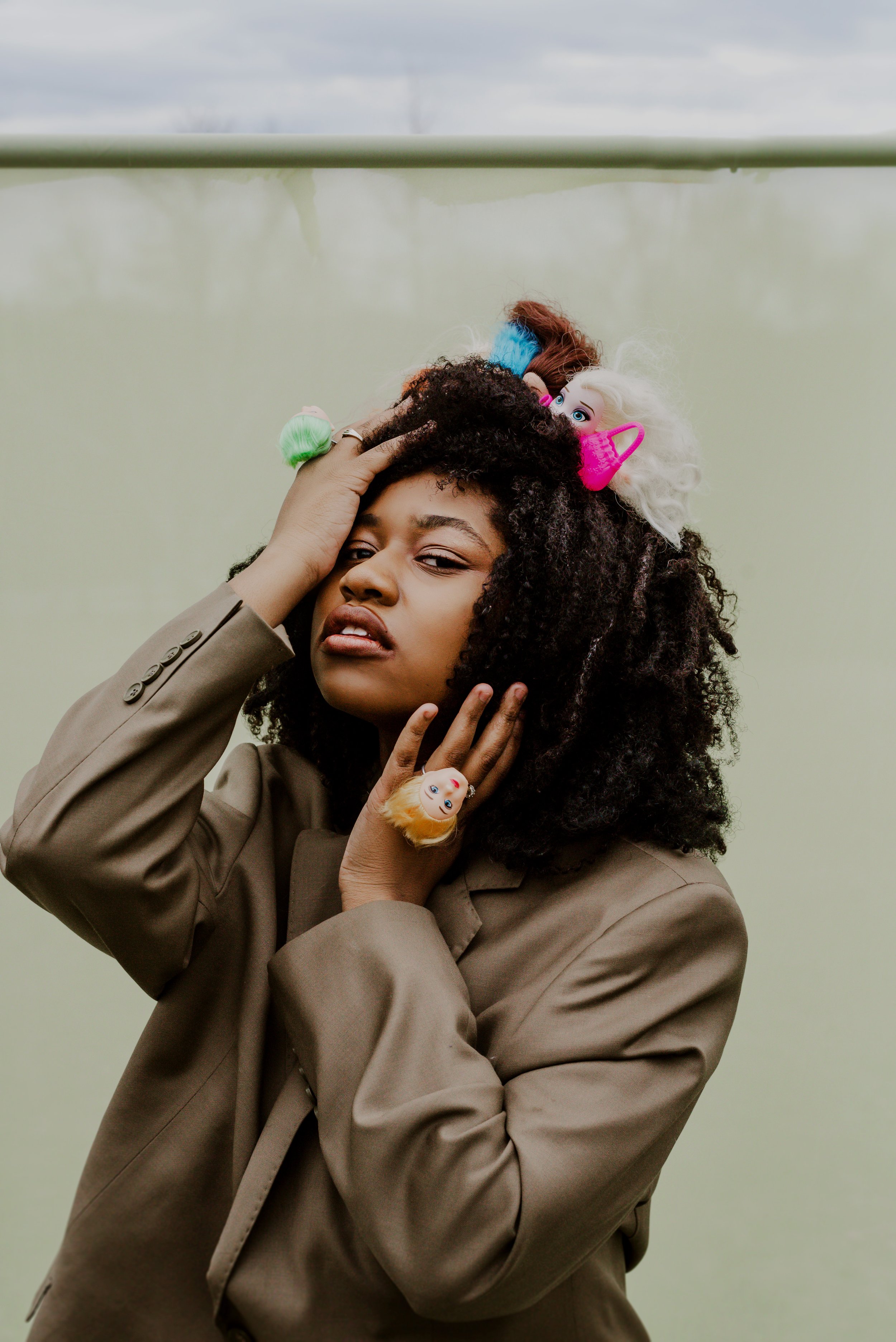
Inclusivity
Did you know that children become aware of racial differences as early as 3 years old? Did you know that children often mimic their dynamics, classroom experiences and daily interactions with their toys/play time? Children largely form their perception of the world and how to interact with it through play - so why is racial and general inclusivity in children’s toys still such a taboo topic rather than just another normal slice of life?
Some of the first ever racially inclusive playable products that arrived in the industry include items such as the “Always Did ‘Spise a Mule” which was a technical bank depicting a grossly caricatured Africa American boy riding a mule. When you would push the lever, the mule would buck and throw the rider over its head onto a log on the ground implying that playing in violence against the character was fun or comical. Another example was the “Paddy and the Pig” which was a mechanical bank that shows an irishman eating with a pig. When the pig kicks a penny on to his tongue his eyes would roll back as he swallowed it. We also were introduced to the “Reclining Chinaman” which was a mechanical bank featuring a smiling Chinese man lying against a log and holding playing cards none hand and a rat at the base of the log that which they were rumored to eat. This product reinforced the stereotypes of the time that viewed Chinese as crafty tricksters who cheated American working men out of work by accepting lower wages and poor state of living. In the same year that was created, widespread anti-Chinese rhetoric let to the passage of immigration laws banning immigration the the United States for Chinese laborers.
To simply put it, the issue with all three of these is that although they depicted other races, they all depicted them through derogatory stereotypes. The united states focus on mass produced toys back in the day relied on marketability and still does to this day. Marketability intentionally tries to appeal to dominant attitudes and values, and since we have a history of toys created to market towards the dominant traits and attitudes of their time, they helped legitimize the ideas, values, and experiences of that group while simultaneously discrediting the ideas, values, and experiences of others.




During the 19th and 20th centuries, many immigrant groups that were new to the U.S. were grossly depicted through stereotypes we still carry to an extent in todays world. Those who felt threatened by the masses of immigrants entering the cities and African Americans emerging from slavery are what fueled the creation of these derogatory and stereotypical depictions in toys/games/piggy banks, etc.
Its simple really - A threatened dominant group translates this threat into the toys of its time which regardless of true intention, creates fear and contempt towards those it considers threatening, while also fueling admiration for itself.
The toys your children play with help shape their view of the world around them. Play time is a large influence on how a child develops their social, and emotional awareness. They learn about social values like compassion, self-esteem, and leadership to name a few. It truly creates their foundation on who they will become in their adult life and how they handle the world. Toys can be at fault for faulty ideas and opinions about race, gender, and other kinds of diversity like disabilities. They can unintentionally send damaging and negative messages to children.
If children are not actively being taught things to counter their personally internalized perceptions, then they will only see what is true in their very small window they have of the world through the immediate and tangible things in their life, their toys. To help children become more critical in their thinking skills, the more diverse their toys are - the better!
We can’t control every message our child forms in their head but small and simple changes like including more positively impactful diverse toys in their life can help them open up more to respecting and acknowledging other kinds of human beings in the world.
When children of color do not see them selves represented in the toys they play with, it can cause them to feel as though something is wrong with them, or that they lack value in the world. It may cause them to believe they need to change for society to accept them, to assimilate more to a white society. This has the same affect on a Caucasian child, where they feel children of color don’t belong in their world or deserve the same experiences in the world that they do.
In the 1940’s there was a psychological study done by Kenneth and Mamie Clark known as “The Doll Test.” This study was designed to study the psychological effects of segregation on African - American children. Clark used four dolls that were identical except for color to test childrens racial perceptions. The children involved in this study ranged from ages 3 to 7. Each child was asked to identify the race of each doll as well as determine which doll they prefer. Majority of the children in this study preferred the white doll and assigned positive characteristics to it. The Clarks concluded that “Prejudice, discrimination, and segregation created a feeling of inferiority among African American children and damaged their self esteem.”
When it comes to the gender of the children, they are instantly treated differently based on their perceived gender than another from the moment they are born. Children are most often times instantly exposed to toys, books, and even media that are assigned to their given gender. According to research done by Siobhan E. Smith who is a professor of communications at the University Of Louisville, “Repetitive, Stereotypical images can influence a child’s interpretations of his and other’s social roles.”
Though we have made tremendous climbs in the right direction with toy companies including more of a variety of representation of people in their products, we still face this issue of lack of inclusivity. Example of taking 1 step forward and five steps back would be when just as recently as last year-when American Girl pulled black and Asian representing dolls from their product line and it stirred up a massive uproar on social media.
We do see more positive representations for children to look up to as we continue on this journey, but we also need to acknowledge that when we do see these inclusions of diversity it is almost always accompanied by a Caucasian character - you won’t see them sold alone or neutralizing the situation by making all their figures yellow like the LEGO Group. (Which that is certainly no dis on LEGO, since they have been successful in recent years by representing diversity in their Friends Line.)
We owe it to all children of all sizes, genders, and color to create and market toys, games, books, and more that reflect and represent the rainbow of diversity that is the human race. I think it makes sense to say that children will be interested and engaged when they can see themselves reflected in the products they are surrounded by. We should work to normalize diversity in our childrens’ toys in order to normalize differences in the real world. Representing what the world actually looks like, can only help your children better prepare for when they are adults of their own.
I am no expert, I am simply someone who wanted to understand this topic more than I already had. I wanted to teach my self a more rounded understanding of this issue and I wanted to be able to express it and talk about it with you. I think this is something most of us overlook because children’s toys are well…, they’re toys, and we often times don’t see that as anything more. It doesn’t make us bad people to not instantly notice when something is an issue, our society started off this way and we are direct products of our environment; but we become bad people when this is brought to our attention and we deny it’s validity or do nothing to change that cycle in our personal lives for the sake of our children and their future.




I didn’t write this to hurt anyone’s feelings. I didn’t write this to start an argument or debate, simply because there isn’t one. I wrote this because I believe it’s important for the future of us as human beings. Everything starts from such simple beginnings, we were all children once. Children are highly influenced human beings. Children are learning everything about this world from scratch, even down to what emotions are and how they work. A child will experience everything for the first time atleast once, and we owe it to our children to make as many of those experiences as positive and as diverse as we can for them so that they have the tools to become exceptional adults.
Regardless of our differences I believe what we all have in common is that we want what is best for the ones we love, and our selves. If introducing your child to more diverse and inclusive toys and products is the only thing you do, it still will make such a positive and impactful difference.




For the parents out there, you are doing the best you can and I believe in you. If you are still here reading this, I just want to thank you deeply for listening and hearing me. As an artist I sometimes enjoy being able to use this piece of my life to teach my self something new or attempt to make even just a small difference in the world. Thank you for reading, thank you for existing and fighting along in this world. Thank you.
I want to give a very special shoutout to Kimmia Bratcher who is the model in the images you’re viewing and the core piece of bringing these images together. If it was not for her contribution to this concept, it would not have existed in the reality we are viewing it in right now. Kimmia is an extremely talented human being who wanted to help create this message with me and she did not disappoint. She brought her own clothing, did her hair and make up her self and also brought such beautiful and unique posing with her for this shoot. I appreciate you so much Kimmia and thank you for helping create this message with me.
You can find her on instagram @
_Kimmia.bracther_
If you would like to read further on this topic, I will add links to the articles I read up on to help me write this for you all below.
https://www.maisonette.com/le_scoop/diverse-toys-and-play
https://www.ferris.edu/HTMLS/news/jimcrow/links/essays/toys.htm
https://blogs.scientificamerican.com/voices/it-s-time-for-more-racial-diversity-in-stem-toys/
https://www.nytimes.com/2020/08/03/parenting/multiracial-toys-diversity-play.html
















